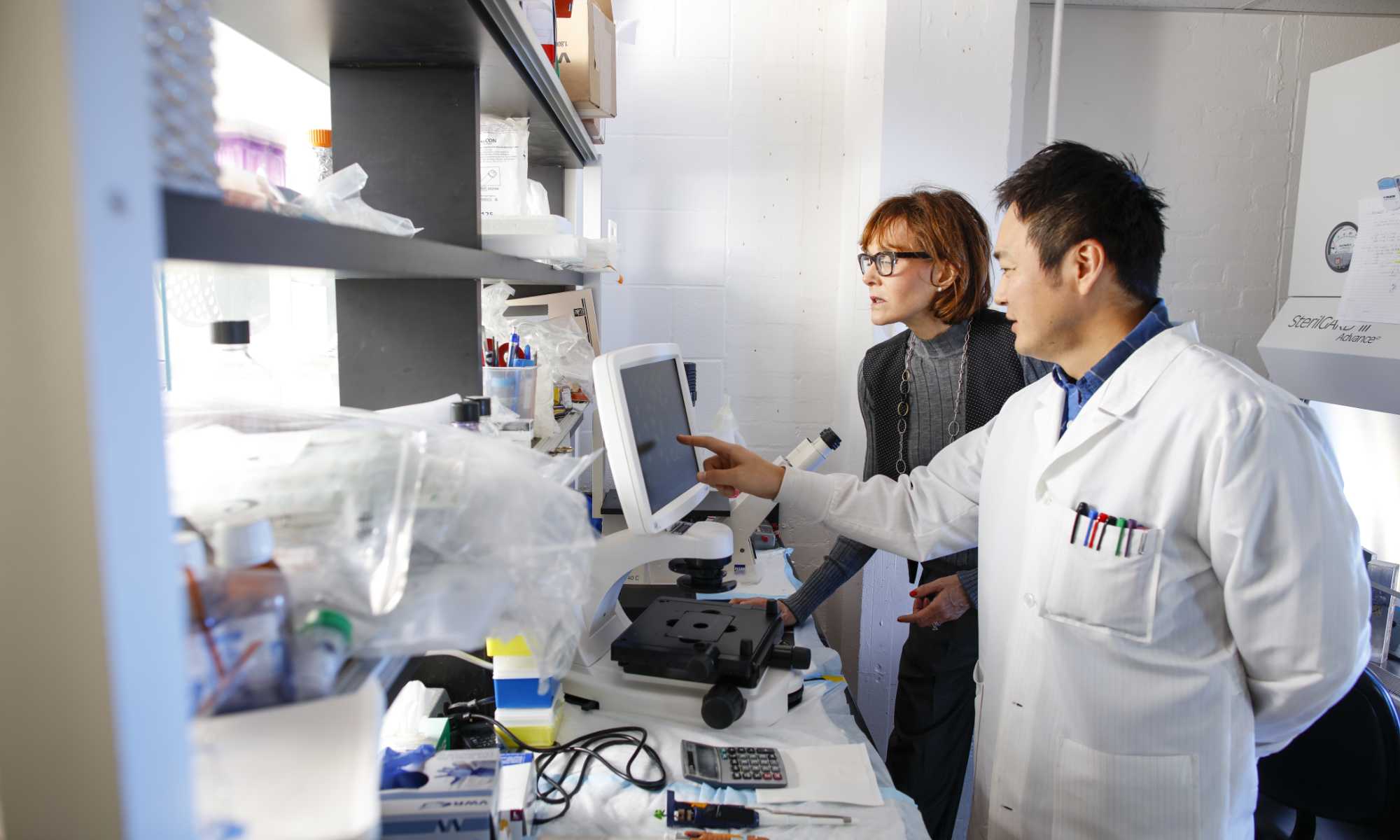The shelves that held bound volumes of science and engineering journals on the lower floor of Carlson Library have been cleared so the space can be converted to a research lab for Qiang Lin, associate professor of electrical and computer engineering.
The conversion will begin this summer.
Most of the journals are available online. Material not stored in electronic form is kept at the University Library’s Annex, and can be accessed, generally within 24 hours, by placing a request through the River Campus Libraries website.
A new hands-on learning and research lab envisioned for the Carlson Science and Engineering Library will give students and faculty a place to explore augmented and virtual reality—regardless of their level of expertise.
“We will have students and faculty going into that space who know exactly what they are doing and will create an app for a class project or a technology to use in their teaching,” says Zari Kamarei, the Sommerville Director of Science and Engineering Libraries at the University of Rochester. “We will also have students who may not know much about the technology but will be able to take a workshop on AR/VR and then decide if that’s for them.”
Faculty and students also will have a say in how the lab is designed.
Lauren Di Monte, a data and research impact librarian, is leading a steering committee that is tasked with coming up with a functional program by November.
The committee plans to hold a series of design charrettes—“facilitated brainstorming sessions”—in which faculty and students will be invited to move pieces around on a floor plan to help “get at the key things people want to see in this space,” Di Monte says.
The timeline for actual construction will depend on how soon funding can be secured.
AR/VR research is one of the University’s top research priorities. The lab, a joint project of the River Campus Libraries and Arts, Sciences & Engineering, would provide “on-ramps to faculty and students who want to engage in AR/VR technology and development,” says Wendi Heinzelman, dean of the Hajim School of Engineering and Applied Sciences. “Given the potential for AR/VR technologies to transform everything from education to health care to entertainment, this space will be a valuable addition to our campus. The River Campus Libraries is the perfect home for this space.”
“I think it’s great the library is interested in having a place where students can get their hands on the tools and systems to experience AR/VR,” adds Mark Bocko, chair of the electrical and computer engineering department and leader of the University’s AR/VR Initiative. “When you put a facility and tools like this in the hands of students, interesting things can come out of that.”
A user research study, conducted last semester by a River Campus Libraries working group led by Di Monte, looked at other AR/VR labs around the country and gathered initial feedback from faculty and students here. The group recommended a hands-on learning lab designed to support a range of research, teaching, and learning activities, including spaces where faculty and students could meet to foster discussion and collaboration, experience AR/VR projects, learn and work with new tools, and have easy access to expert help.
According to Di Monte, initial feedback last semester included the observation that there are few AR/VR tools available for students on campus—and that it would be particularly helpful to have a place where equipment is “already set up and ready to go, so you’re able to focus on the research and the experience, rather than setting things up and trying to figure out what to do if something goes wrong.”
It is also important to design a lab that will be flexible enough to evolve as new AR/VR technologies and other technologies emerge, says Mary Ann Mavrinac, vice provost and Andrew H. and Janet Dayton Neilly Dean of University of Rochester Libraries.
Kamarei says the lab will be consistent with a primary mission of the River Campus Libraries, which is to support the teaching learning and research mission of the University through the provision of scholarly content, expertise, technology, and space.
“What we’re essentially doing is filling a gap – providing students with basic skills that professors don’t have time to cover in their classes. There’s a fine line between where a student is and where faculty members want a student to be, and the libraries have always been in a position to fill that gap by providing additional resources and expertise,” she says.
“Hopefully faculty will look at this as an opportunity to integrate the resources of the lab into their curriculum,” Bocko adds. “If you really want students to use the lab, you have to integrate it into the courses they take.”



